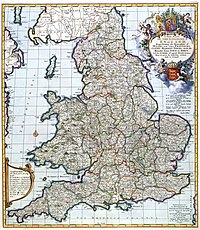
Photo from wikipedia
Historical climatology research dealing with the pre-instrumental period has rarely been able to include the weather on a daily scale. Other than for specific, extremely well-documented events, reconstructions only concern… Click to show full abstract
Historical climatology research dealing with the pre-instrumental period has rarely been able to include the weather on a daily scale. Other than for specific, extremely well-documented events, reconstructions only concern longer-term weather patterns (monthly, seasonal or annual). Yet at the end of the sixteenth century, David Fabricius recorded the weather, day after day, in his notebooks. In the middle of the Little Ice Age, he was a pastor in east Friesland (currently in the northwest of Germany) and a meteorology enthusiast. This documentary source is one of the richest available for reconstructing the weather at a time before measuring instruments gave systematic readings. Fabricius observed the weather and noted in his diary some terms that were more or less objective (such as cloudy, rain, snow) whilst others were more subjective (such as hot, warm, beautiful weather). We are therefore obliged, in this paper, to propose quantitative climatic reconstructions produced by “making do” with these notes about the weather as Fabricius perceived it. Our paper is focused on the reconstruction of winter weather (December, January and February) during the period covered by Fabricius’ notebook (1594–1612). Thanks to this notebook, it is possible to discern reasonably accurately the number of days of frost and snow and also to suggest a summary of winter weather types according to the number of days of precipitation. We compare Fabricius’ observations with other climatic reconstructions in Europe and also look at whether blockage phases, able to generate advection of cold air, happened frequently, this being one of the possibilities that could explain the cooling in Europe during the Little Ice Age.
Journal Title: Climatic Change
Year Published: 2017
Link to full text (if available)
Share on Social Media: Sign Up to like & get
recommendations!